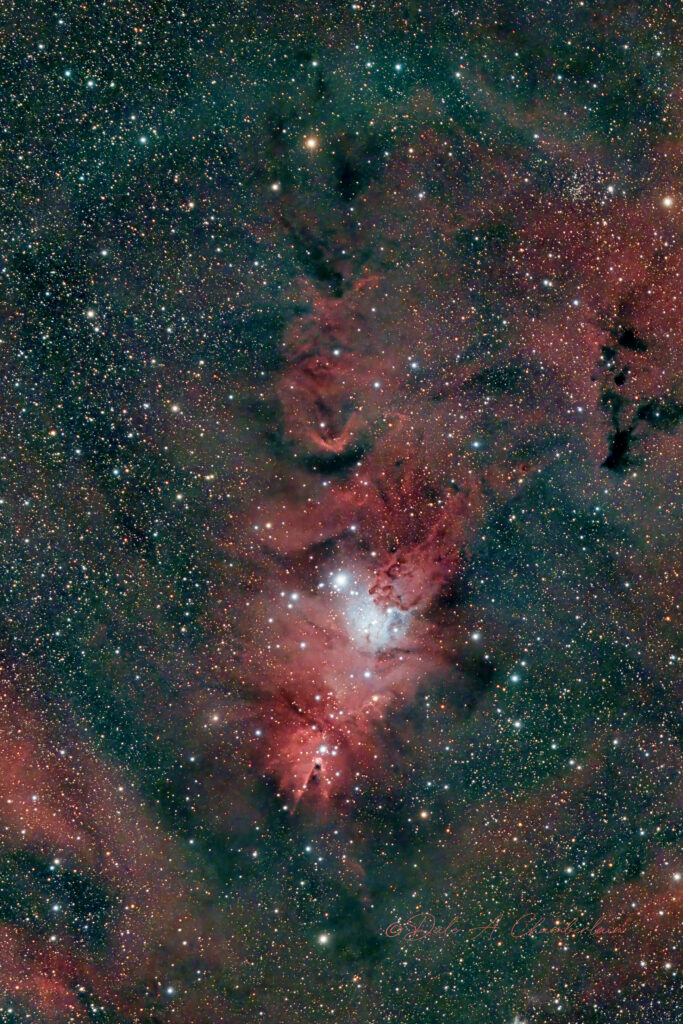
Object:NGC 2264 is the location where the Cone Nebula, the Stellar Snowflake Cluster, and the Christmas Tree Cluster have formed in this emission nebula. The Stellar Snowflake Cluster is located 2,700 light-years away in the constellation Monoceros.
The Snowflake Cluster was granted its name due to its unmistakable pinwheel-like shape and its assortment of bright colors.
The Christmas Tree star formation consists of young stars obscured by heavy dust clouds. These dust clouds, along with hydrogen and helium, are producing luminous new stars. Combining dense clouds and an array of colors creates a color map filled with varying wavelengths.
With varying youthful stars come vast changes to the overall structure of the clusters and nebula. For a cluster to be considered a Snowflake, it must remain in the original location where the star was formed.
When referring to this emission nebula overall, several aspects contribute to the prominent configuration of a snowflake and/or Christmas tree cluster. There is a diverse arrangement of brilliant colors and an evolving process of structure that follows star formation in a nebula.
The ratio of brown dwarfs to stars is 1 to 2.5 and 1 to 7.5.
Taken: March 10, 2024
Telescope: Skywatcher Esprit 80 ED Triplet APO Refractor
Mount: Paramount ME II
Camera: ZWO ASI2600MC-Pro (cooled to 0C; Gain 100) Bin 1×1.
Guiding: Unguided
Focuser: Starizona Micro Touch Autofocuser
Rotator: Optec Pixys LE camera field rotator
Filters used: Optolong L-Quad Enhance Filter
Exposures: 164×90 seconds for a total exposure time of 4 hours 6 minutes; calibrated with 40 dark frames, 40 flat frames with 40 dark-flats.
Seeing Conditions:
Image capture and telescope control: Nighttime Imaging ‘N’ Astronomy with (N.I.N.A.) / TheSkyX Pro with a SkyShed POD MAX observatory.
Processed with PixInsight, Photoshop CC 2024